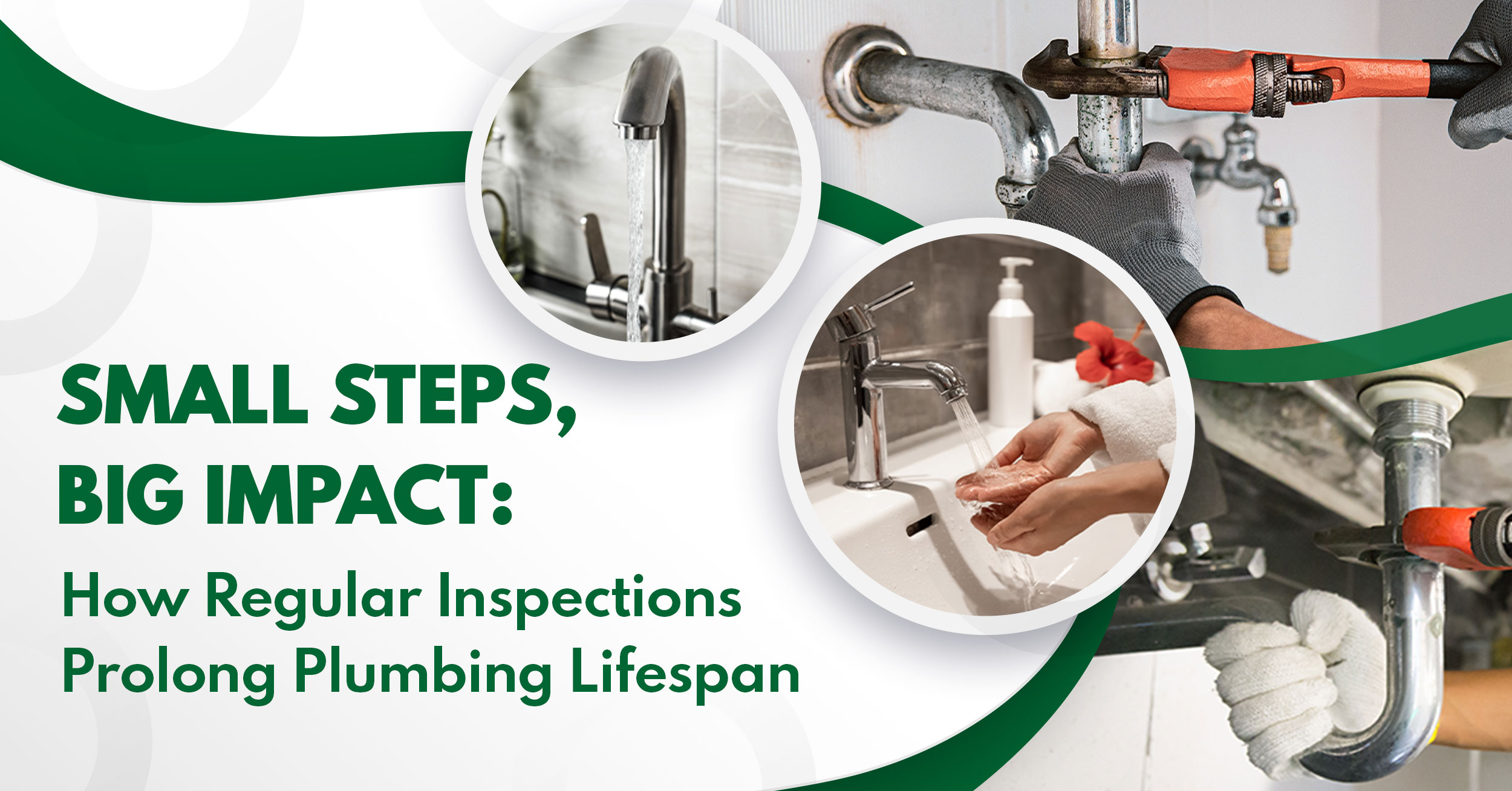Small Steps, Big Impact: How Plumbing Inspections Prolong Plumbing Lifespan

A well-maintained plumbing system is the backbone of a functional and comfortable home. Neglecting regular plumbing inspections and maintenance can lead to costly repairs and a shortened lifespan for your plumbing infrastructure. In this blog, we will explore how plumbing inspections, coupled with proactive maintenance, play a pivotal role in preserving the longevity of your plumbing.
The Importance of Plumbing Inspections:
Early Detection of Issues: Regular plumbing inspections enable professionals to identify potential issues before they escalate into major problems. This proactive approach allows for timely plumbing maintenance, preventing small leaks from turning into extensive water damage. According to a study conducted by the Plumbing Manufacturers International (PMI), homes that undergo regular plumbing inspections experience a 40% reduction in the frequency of plumbing-related issues.
Preserving Pipe Integrity: Over time, pipes can develop rust, corrosion, or mineral deposits. Through inspections, experts can assess the condition of pipes, ensuring they remain structurally sound and free from potential weaknesses.
Preventing Water Damage: Undetected leaks can lead to significant water damage to walls, ceilings, and floors. Plumbing inspections help locate and repair leaks promptly, preventing extensive and expensive water damage.
Cost Savings: Investing in regular plumbing inspections and maintenance may seem like an upfront cost, but it is a wise investment that can save you money in the long run. Timely identification and resolution of problems prevent more extensive, expensive repairs down the line.
When should you have a plumbing inspection?
Schedule annual plumbing inspections for a proactive approach to home maintenance, preventing costly emergencies. The Plumbing-Heating-Cooling Contractors Association (PHCC) of San Diego recommends checks every two years at most. Consider more frequent inspections if:
- You are buying a new home or have recently moved to a new house.
- You live in a house that is more than 40 years old.
- You have a tree-filled yard.
A comprehensive plumber inspection involves a meticulous evaluation of various critical areas and systems within your plumbing infrastructure:
Water Supply Lines:
Inspecting all visible water supply pipes is a key component of the assessment. This encompasses a thorough check for leaks, corrosion, breaks, and potential clogs. This examination extends to pipes concealed under sinks, behind appliances, and more.
Drainage System:
The inspection covers all aspects of the drainage system, including drain pipes, p-traps, and overflow drains. Detection of clogs, leaks, and detachments is prioritized, alongside assessing drainage flow rates. This ensures optimal performance and effective water drainage.
Fixtures:
Every plumbing fixture, from faucets and showerheads to toilets and appliances like dishwashers, undergoes a detailed examination. The focus is on identifying leaks, unusual noises, or water-spraying irregularities. This inspection may also offer insights into upgrading plumbing fixtures for enhanced efficiency and aesthetics.
Water Pressure:
The evaluation extends to testing water pressure at all fixtures to guarantee sufficient flow for household needs. Addressing and rectifying any pressure irregularities ensures a consistent and reliable water supply throughout your home.
Water Heater:
Inspection of the water heater involves scrutinizing its installation, flue pipes, safety valves, energy efficiency, and signs of wear. Identifying issues such as leaks, corrosion, or rust contributes to prolonging the life of the water heating system and helps to know if your family requires an upgraded water heater.
Gas Lines:
Ensuring the safety of all connections is paramount. For homes with natural gas service, a thorough examination of gas pipes is conducted using a sniffer device to detect leaks.
Sewer Line:
A video inspection of the sewer line connecting your home to the municipal sewer main is an integral part of the assessment. Identifying obstructions, leaks, or root intrusion early on can prevent potential disruptions and damage.
Takeaway!
In conclusion, prioritizing plumbing inspections and maintenance is paramount for preserving the lifespan of your plumbing system. By adopting a proactive approach, homeowners can not only prevent major plumbing disasters but also ensure the efficient and prolonged functionality of their plumbing infrastructure.

